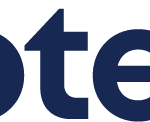Though many holidaymakers seek rest and respite from the stress of daily life, others dream of adventure holidays that resemble action films. They seek powerful sensations and want to be the heroes of their own vacation. These would-be Robinson Crusoes and Indiana Jones can concoct their very own customized adventure holiday, choosing the setting (mountain, jungle, desert, etc.), the activities (trekking, rafting, safaris, etc.) and the level of difficulty.
Though no statistics are available on the subject, hosts of kids probably dream of making adventure their profession. However, what is more surprising, is the growing number of big kids who aspire to be real adventurers for a few days, for the duration of a holiday. This is what happens when you watch too many episodes of “Man vs. Wild”, the TV reality show in which adventurer Bear Grylls is dropped by helicopter in hostile territory and left stranded to survive by his own means.
The adventure travel sector is currently enjoying a boom. In Europe, North and South America, which account for close to 70% of overall international tourism departures, the share of tourists who chose extreme adventure holidays increased by an average of 62% a year between 2009 and 2012 . Already in 2010, a study by George Washington University School of Business predicted 150 million adventure travel departures from these three regions for the following year.
What exactly do we mean by adventure travel?
Extreme adventure is actually only one of the aspects of this type of tourism. A broad definition of the term defines adventure travel as any domestic or international trip that includes at least two of the following three aspects: physical activity, interaction with nature and cultural learning or exchange.

The sector professionals then categorize the activities into three groups: “hard adventure” with extreme activities such as caving, climbing or trekking; “soft adventure” with easier activities such as camping, fishing and rafting, and lastly “other activities”, which do not fall into either category and are generally more cultural, such as attending festivals, getting to know the locals, learning a new language or visiting historical sites.
At first, adventure travel was steeped in the American pioneering imagery of the adventurer relinquishing all creature comforts and venturing into vast unchartered territories. Then, it became the prerogative of travelers who wanted to get away from mass tourism. Now, adventure travel has been overtaken by its own success, but the sector professionals do their best to satisfy both the purists and the growing demand in a bid to ensure that as many people as possible can experience this type of holiday while still guaranteeing true adventurers those intimate and authentic experiences.
From one adventure to another
There is opportunity for adventure on all the continents. Including Antarctica, where travelers can follow in Commandant Charcot’s footsteps and visit Graham Land, where “the Polar Gentleman”, as he was known, was the first to spend an Antarctic winter . It’s definitely a good way to see the whales!

Travelers can choose from a whole host of destinations depending on the activities they are interested in. For example, there are several bungee jumping sites, though not all of them offer a plunge as impressively steep as Bloukrans Bridge in South Africa, which is 216 meters high. Travelers follow the adventurer in them, crossing the deserts of Namibia or climbing up into the Himalayan heights. However, those that only have two or three days don’t necessarily need to go far to enjoy a long hike or horse ride, canoeing or climbing.
Next summer, AdventureWeek, which is organized by the ATTA (Adventure Travel Trade Association) will take place in Eastern Europe. The objective of this nine-day familiarization journey is to raise awareness of the adventure potential of the Balkans. The program includes visits of the area’s UNESCO World Heritage sites, fresh-from-the-farm food experiences, breathtaking landscapes complete with cascading waterfalls and pristine lakes, as well as sports activities such as mountain climbing, diving and even paragliding!
The most highly sought-after destinations are the ones where mass tourism isn’t yet very developed. Today, adventure tourism also aims to offer responsible travel that respects nature and enables locals to enjoy a share of the financial benefits.
Though James Bond and Lara Croft fans delight in riding non-conventional motor vehicles like quads and snowmobiles, the truth is that it’s the bicycle – yes, the bicycle – that’s really in. Bicycle tourism is actually much more environmentally responsible with no CO² emissions and profit for the locals in the little villages cycled through when on a tour. What is more, everyone can enjoy it, couples can go on a romantic cycling escapade, families can go cycle touring so their children can let of steam, and seniors can relive their 20s. Adventure travel agencies now offer an ever-growing number of cycle tours. All the traveler has to do is pedal!

Another equally eco-friendly and relatively affordable activity that’s also very hip is trail running. These races in natural environments take participants across rough terrain through breathtaking landscapes. There are now several trails such as Ö-till-Ö in Sweden. This 75 km race in the Stockholm archipelago includes 10km of swimming in water that is not necessarily very warm or very calm!
Across all frontiers, what really matters is surpassing oneself. It’s a tall objective for a holiday: come home exhausted, but get a hero’s welcome! The ultimate representative of this kind of heroism is Great Britain’s Lizzy Hawker, five-time winner of the Ultra Trail du Mont-Blanc in France, who trains about 150 km every week!
Experimental tourism
Adventure travel has gone down many paths and can be divided into several sub-categories. Jungle tourism, for example, takes people on excursions in tropical regions. Examples include the Mayan Trail in Mexico or Guatemala, or trails in Malaysia where travelers fall in love with the flora and fauna of these lush lands. Another category is “dark tourism” which involves travel to places around the world associated with death and tragedy, for example Ground Zero, Auschwitz, or, more controversially, the Ukrainian city of Pripyat abandoned after the Chernobyl disaster.
Experimental tourism is impossible to categorize. This improbable type of tourism is similar to adventure tourism because of the crazy things it can make people do. Its inventor says: “experimental tourism escapes definition. However, it can more or less be defined as an amusing way of travelling, in which the travel method is clear, but the destination is sometimes unknown” . The inventor is Frenchman Joël Henry, who is himself impossible to categorize: he is, by turns, a photographer, social worker, second-hand book seller, inventor of board games and founder of Latourex, Laboratoire de Tourisme Expérimental.
So what does Latourex offer? A stint of Insider travel, for example. Despite its name, there’s nothing very complicated about this. The idea is to explore a place following the recommendations of locals only. Why not try it out in your own city on a gloomy Sunday?
However, things start to get complicated with Dodecatourism. Yet the idea is very simple: build a travel itinerary out of the number 12. For example, take a train that leaves at 12.12 and get off at the twelfth stop, or walk along the twelfth line of latitude or start out on a trip with just €12 in your pocket, etc.
As you will have gathered, Joël Henry is very creative. There are a host of other experimental travel ideas to try out! Such as Ero travel, which involves arranging to spend a weekend away in a city with your partner. Travel to the destination by different means and without arranging a meeting time or place, then wander through the urban landscape searching for your loved one… There’s also the “fictitious trip” concept of Literary Travel, which is a literary tour of the world. Start by reading a book by an author from your country, then read a book by someone from a neighboring country. Continue until you have been around the world and are back in your country of origin! Poetic isn’t it?

In keeping with adventure travel, and just as preposterous as experimental tourism, the ibis brand set adventurer Aaron Chervenak an unprecedented challenge at the beginning of the year: to achieve “The Ultimate Sleep”. His objective was to sleep perched on the edge of a 2810m high precipice on Mount Roraima for one night! This is one of the world’s most notoriously hostile and inaccessible locations and it’s not for nothing that it’s nicknamed “Devil’s Mountain” by the locals. All the same, Aaron Chervenak woke up in great spirits, asserting that he had had an excellent night’s sleep. It has to be said that although he was on the edge of a cliff, he did enjoy the comfort of a “Sweet Bed by ibis”.












